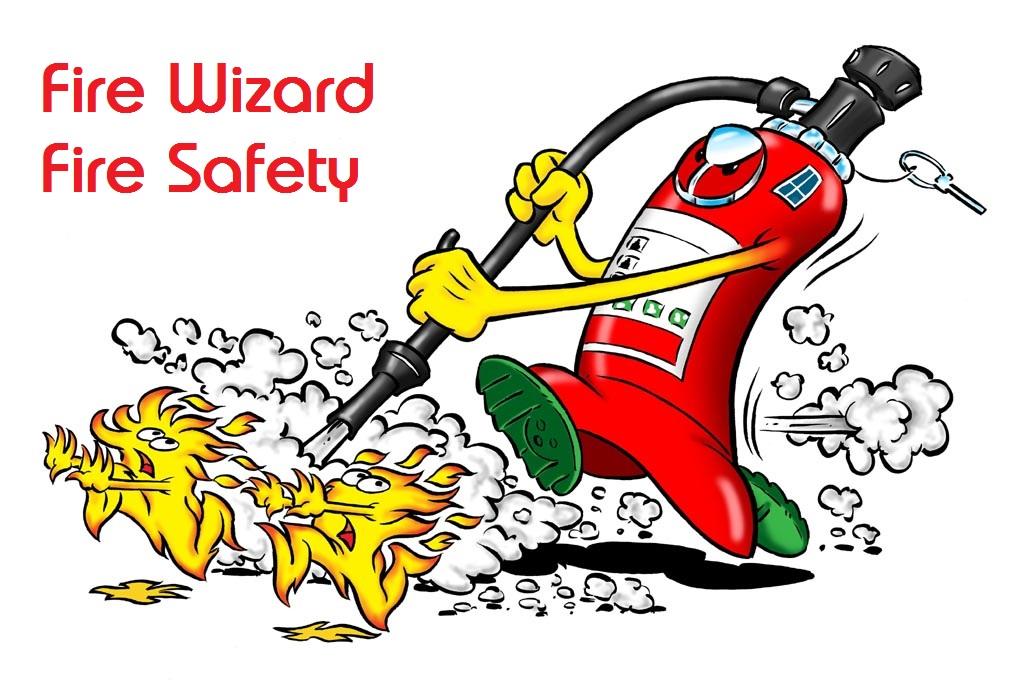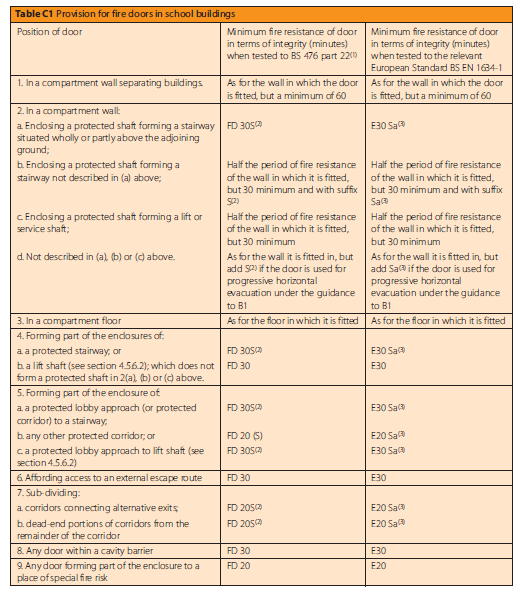-
Posts
2,704 -
Joined
-
Last visited
Everything posted by AnthonyB
-
If you are installing a Grade A system, yes (usually required in HMO's and recommended for very, very big houses)
-
Powder also risks wrecking the salon and equipment. Water mist simplifies cover as you only need one type, halving the number you need and making it easier from a training point of view. Water mist is safe on flammable liquids, but only small fires hence the lack of Class B marking on them, but the small quantities liable to be involved in your type of premises should still be covered. 3 litre mists have a 13B rating, 6 litre mist a 21B rating.
-
It's a Rafiki/Fike Multisensor. It's a combined smoke/heat detector that can be set to smoke only, heat only or multisensor smoke/heat and often includes an integral sounder. It forms part of either a Rafiki/Fike conventional twin wire fire alarm system or one of their addressable systems - both Part 1 Commercial systems with control & indicating equipment.
-
If one of the leaves is locking in that fashion then it is usually there to give extra width for loading/moving of large items/furniture and not part of the required exit width. You can interrupt seals for ironmongery such as locks, etc but it should be for as little of the edge as possible.
-

Building Standards or Building Regulations?
AnthonyB replied to Ussrdolphin's topic in Fire Risk Assessments
If it's an existing building the government risk assessment guides contain details on determining suitability. After that Approved Document B could be used. BS9999 only applies if a building is constructed in accordance with it and you can't apply individual parts of it to existing buildings - for it to be used a premises must meet the whole document. -
Assuming it's AFFF or some similar synthetic foam compound that's not the usual correct colour of the concentrate or solution, it looks like it's degraded and I would replace with fresh water and concentrate. As to cause, I'm not sure, could be solution age, contaminated water, exposure to extremes of temperature. I've seen old solution go like this in the old days of cartridge extinguishers sometimes where the water and solution is old and there has also been a reaction with the plastic of the lining and cartridge - was there a sludge on the cartridge and diptubes?
-

How can you stop children from a childcare centre leaving through a fire exit?
AnthonyB replied to a topic in Fire Exits
Not for fire safety purposes but for safeguarding it would certainly be advisable. -
Yes you do need an FRA for the shop which needs to consider the effects of a fire in the shop on other relevant persons i.e. the flat occupants. If there are no internal common areas to the flats they don't need an FRA but there are fire safety obligations under the Housing Act. I'd need to see the premises (i.e. doing your FRA) to advise accurately on the fire alarm.
-
Simple answer usually yes (unless the manufacturer of the doorset states that frame and door combination can tolerate a larger gap and still perform correctly). Are they closing in a rebate and do they have intumescent seals?
-
Which country - Scotland, England or Wales? Do you occupy the flat or let it out? Do they want the systems in each flat linked to each other or not? This will assist in replying. Whilst there are no communal areas and the Fire Safety Order does not apply the Housing Act does and this does include the ability to require fire safety improvements inside a flat.
- 34 replies
-
- flats
- self contained
-
(and 1 more)
Tagged with:
-
As a joint freeholder I would suspect you are liable for your share of costs - the applicability of the Fire Safety Order to your flat isn't the issue, it's more a property law issue vis a vis the liabilities as a joint freeholder - the freeholder is responsible for the managmeent of the communal space and associated costs be it fire safety or any more general maintenance and as you are one of them (& possibly as a result a director of the TMC if there is one??) you could be liable for your share of the cost.
-

When selling flat, do I need a fire risk assessment?
AnthonyB replied to a topic in Fire Risk Assessments
No internal communal space by the sounds of it so no. -
A lot of lazy or under-trained fire risk assessors will just take a yes/no approach to if there is a fire alarm system, despite the mere presence of one not ensuring it is suitable or sufficient. If the layout of a system meets a category it should be described as such, however some existing systems expanded piecemeal over the years don't meet any (although many fall in between two categories a common one being L4 plus specified additional detector heads) in which case guessing or pushing it into a category is wrong and a simple summary of areas covered is more appropriate. Plenty of guidance out there on minimum categories for various types of premises, BS5839-1 itself gives a good summary, it's often less than people expect with many places still only requiring manual call points
-
Unless it is so small a shout, hand bell or similar can be heard clearly throughout the premises it should have an electrical manual fire alarm system of 'break glass' manual call points and alarm sounders.This has been a requirement of schools design for over 60 years. Schools used only during the school day and not for extra curricular uses and that aren't of the CLASP construction (a cheap modular construction type popular for local authority buildings in the 50's - 70's that allows for rapid fire spread through voids) don't usually require much if any detection but must have the call points. Usually the fire alarm and class change bell system were combined. Ask to see the Fire Risk Assessment for the school and how it gets around the question of adequate means of fire detection & warning
-
This is the guide that you should use to determine what you need https://www.rla.org.uk/docs/LACORSFSguideApril62009.PDF
-
Can't see why doing that would be a problem.
-

Fire Door - need a self-closer?
AnthonyB replied to MysteryMan's topic in Fire Doors and Accessories
Not necessarily, they should be marked 'fire door keep locked shut' and of course locked. Cupboards don't always need a closer. -
If you've underdrawn the stair but not enclosed the area it's almost pointless as fire effluent and heat can still render the escape route untenable quickly, way before the burning of the stair would be an issue. Quite a proportion of house fires, including fatal fires, start in white goods like these so it's no surprise they are taking the approach they are.
-
No you should clear the exits!
-
All in here: https://assets.publishing.service.gov.uk/government/uploads/system/uploads/attachment_data/file/422175/9449_Offices_and_Shops_v2.pdf
-
There is no statutory bar unlike with the old Fire Precautions Act - if the risk requires modernisation of precautions so adequately control it so be it (conversely if the old standard of precautions can be demonstrated to still give tolerable protection then it needn't automatically be modernised). British Standards are not law, in theory (& practice) you can deviate but you fully accept the onus for demonstrating why it doesn't compromise safety.
-
Life or property? Water mist has the advantages of easier to meet water supply requirements than traditional sprinklers - where are you putting the tanks for a traditional system? It seems it's preferred in the hotel sector too: http://www.watermist.com/en/case-studies/hotels-dorsett-regency/
-
Both BB7 the old design guide for fire safety in schools & BB100 the current guide take a different approach to fire doors than you would see in other types of building. Classrooms off a corridor that isn't a dead end don't require to be fire doors (unless an area of high risk like some labs) - so whilst they often still install fire door blanks with vision panels anyway they don't require self closers.
-
As a 'protected stair' it won't be blocked by a fire whilst people are in the building as if the fire is on one of the floors the doors and structure will hold back the fire and smoke for up to 30 minutes, plus also as a protected stair it is required to be free from combustibles and ignition sources so a fire doesn't ever start in it - this is why smaller buildings can still be built with just one stair.
-
Don't use intumescent foam unless specifically for door frame sealing (like Blue60) . One of the biggest fire safety issues is the misuse of the cheap fire rated foam outside of it's limited test scope and hundreds of thousands of pounds is spent each year having to remediate incorrect use. LACORS is guidance, but also a benchmark for enforcers and courts, and whilst you can depart from it you would have to justify why it still provides an adequate level of safety (which can be done just as with other fire safety guidance, but on a case by case basis). If the HO won't listen you can make an appeal to the First-tier Tribunal (Property Chamber) if a Notice has been issued for the works. If you are putting in a new door LABC guidance would look to new doors and frames, even if FD20 was acceptable (which is usually for single dwellings), there is scope for upgrading of the existing doors and frames, but again usually only where FD20 is acceptable (or in heritage premises)


